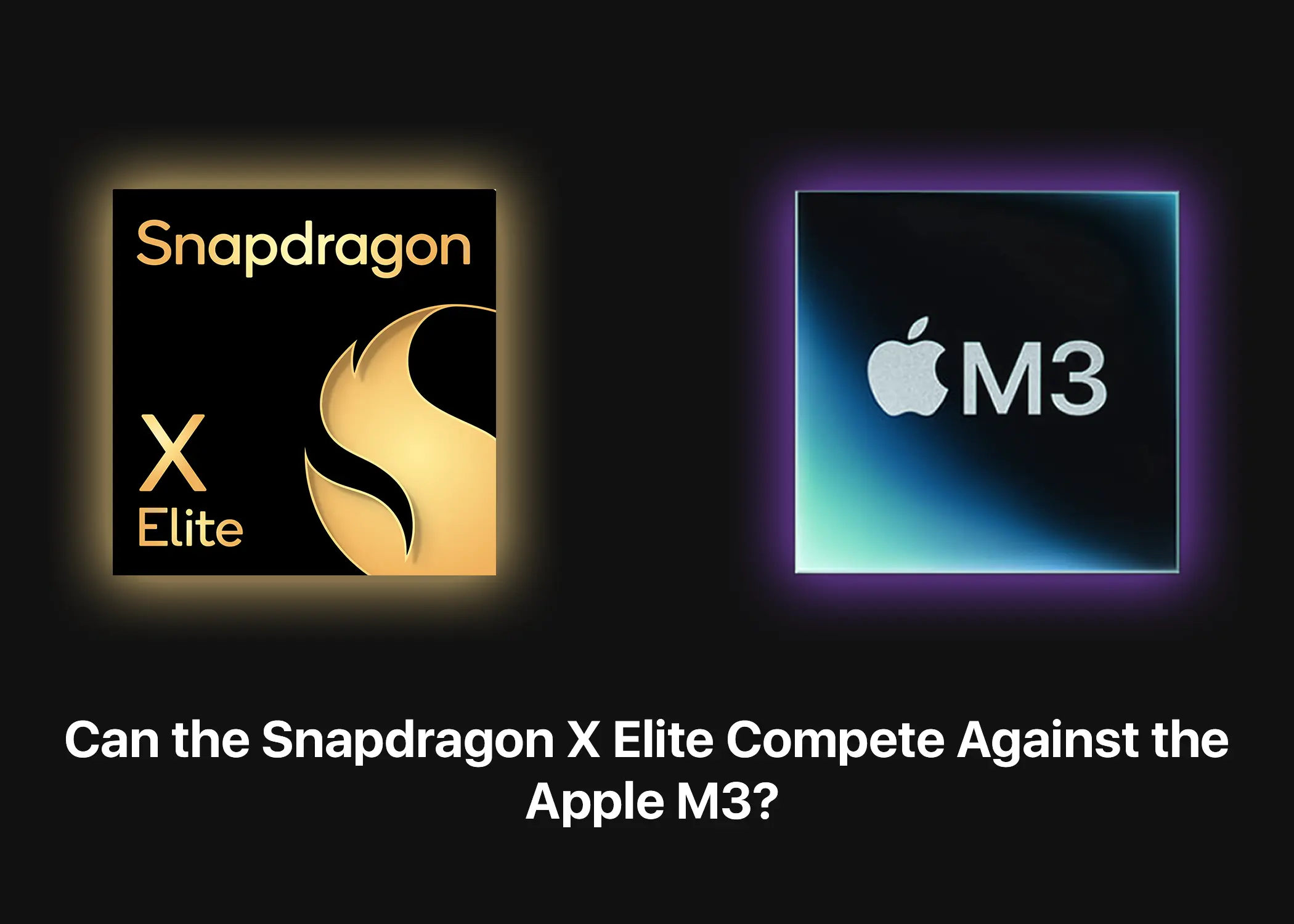In this article, we compare two of the most powerful mobile processors on the market, the Snapdragon X Elite and the Apple M3. We focus on five key features: GPU performance, connectivity standards, AI capabilities, processing power, and connectivity. So that we can determine how well the Snapdragon X Elite competes against the established Apple M3.

5 Key Differences Between Snapdragon X Elite and Apple M3
The two chips are evenly matched, with both featuring 12 cores and powerful GPUs. However, there are some key differences between the two chips. Here’s a breakdown of the two chips, focusing on five key features:
1. GPU Performance
The graphical processing unit (GPU) plays a crucial role in delivering an exceptional gaming and visual experience. The Snapdragon X Elite is equipped with the Adreno GPU, which features DirectX 12 support. While specific details about the GPU remain undisclosed, it promises to be a powerful component. In contrast, the M3 Pro boasts 18 GPU cores, with a 40% performance increase compared to the M1 and a 10% improvement over the M2 Pro. Additionally, it supports ray tracing, setting the stage for intense competition, especially with DirectX 12 support on the X Elite.
2. Connectivity Standards
Thunderbolt and USB standards are essential for connecting various peripherals and accessories to your device. While the M3 Pro supports Thunderbolt 4, the Snapdragon X Elite comes with USB 4. Both standards offer similar high-speed data transfer rates, ensuring that users do not miss out on connectivity options, even on Windows PCs.
Also Check Out: Upcoming Smartphone SoCs in 2023: Qualcomm, MediaTek, & More
3. AI Capabilities
Artificial intelligence (AI) is a pivotal aspect of modern processors, enhancing various tasks, including video editing and generative AI elements. The Snapdragon X Elite features a new Hexagon NPU, offering an impressive 45 TOPS (Trillions of Operations Per Second) of computing power. In comparison, the M3 Pro is equipped with 16 neural engines, which reach up to 18 TOPS. As of now, it appears that the Snapdragon X Elite has an edge in terms of AI performance, which could prove beneficial as AI-driven applications become more prevalent.
4. Processing Power
One of the fundamental aspects of any processor is its raw processing power. Both the Snapdragon X Elite and the M3 Pro feature 12-core processors, but they differ in their core configurations. The M3 Pro boasts six efficiency cores and six performance cores, aiming to deliver 20% more performance than the M1 Pro. On the other hand, the Snapdragon X Elite uses all 12 cores for performance, claiming to be 50% faster than the M2 family. The battle here will determine which processor performs better in everyday tasks and applications, and whether the X Elite’s bold claims hold up.
5. Connectivity
Connectivity is another crucial element in the modern mobile computing landscape. The M3 Pro supports Wi-Fi 6E and Bluetooth 5.2. In contrast, the Snapdragon X Elite not only provides Wi-Fi 7, the latest Wi-Fi standard, but also includes 5G support. The addition of 5G connectivity is a significant advantage, enabling seamless internet connectivity worldwide. This puts the X Elite in a strong position, especially given the increasing prevalence of 5G networks.
Snapdragon X Elite Vs Apple M3
The competition between the Snapdragon X Elite and the Apple M3 processors is heating up in the mobile computing space. While both processors have their strengths, the X Elite offers compelling features in terms of raw processing power, GPU capabilities, AI performance, and connectivity. Its support for Wi-Fi 7 and 5G is a notable advantage in today’s connected world.
Ultimately, the choice between these two processors will come down to real-world performance and user experience. As technology enthusiasts eagerly anticipate the release of devices powered by these processors, it is clear that innovation and competition are driving progress in the world of mobile computing. The future is bright for consumers, with more efficient processors and enhanced features on the horizon, making mobile computing an even more exciting and dynamic space.
